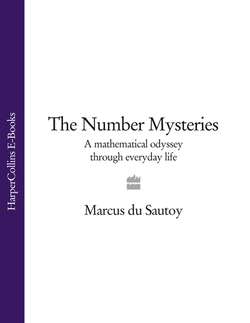Читать книгу The Number Mysteries: A Mathematical Odyssey through Everyday Life - Marcus Sautoy du - Страница 15
Which prime is this?
ОглавлениеFIGURE 1.13
The Mesoamerican culture of the Maya was at its height from AD 200 to 900 and extended from southern Mexico through Guatemala to El Salvador. They had a sophisticated number system developed to facilitate the advanced astronomical calculations that they made, and this is how they would have written the number 17. In contrast to the Egyptians and Babylonians, the Maya worked with a base-20 system. They used a dot for one, two dots for two, three dots for three. Just like a prisoner chalking off the days on the prison wall, once they got to five, instead of writing five dots they would simply put a line through the four dots. A line therefore corresponds to five.
It is interesting that the system works on the principle that our brains can quickly distinguish small quantities—we can tell the difference between one, two, three and four things—but beyond that it gets progressively harder. Once the Mayans had counted to 19—three lines with four dots on top—they created a new column in which to count the number of 20s. The next column should have denoted the number of 400s (20×20), but bizarrely it represents how many 360s (20×18) there are. This strange choice is connected with the cycles of the Mayan calendar. One cycle consists of 18 months of 20 days. (That’s only 360 days. To make up the year to 365 days they added an extra month of five ‘bad days’, which were regarded as very unlucky.)
Interestingly, like the Babylonians, the Maya used a special symbol to denote the absence of certain powers of 20. Each place in their number system was associated with a god, and it was thought disrespectful to the god not to be given anything to hold, so a picture of a shell was used to denote nothing. The creation of this symbol for nothing was prompted by superstitious considerations as much as mathematical ones. Like the Babylonians, the Maya still did not consider zero to be a number in its own right.
The Maya needed a number system to count very big numbers because their astronomical calculations spanned huge cycles of time. One cycle of time is measured by the so-called long count, which started on 11 August 3114BC, uses five place-holders and goes up to 20×20×20×18×20 days. That’s a total of 7,890 years. A significant date in the Mayan calendar will be 21 December 2012, when the Mayan date will turn to 13.0.0.0.0. Like kids in the back of the car waiting for the milometer to click over, Guatemalans are getting very excited by this forthcoming event—though some doom-mongers claim that it is the date of the end of the world.
